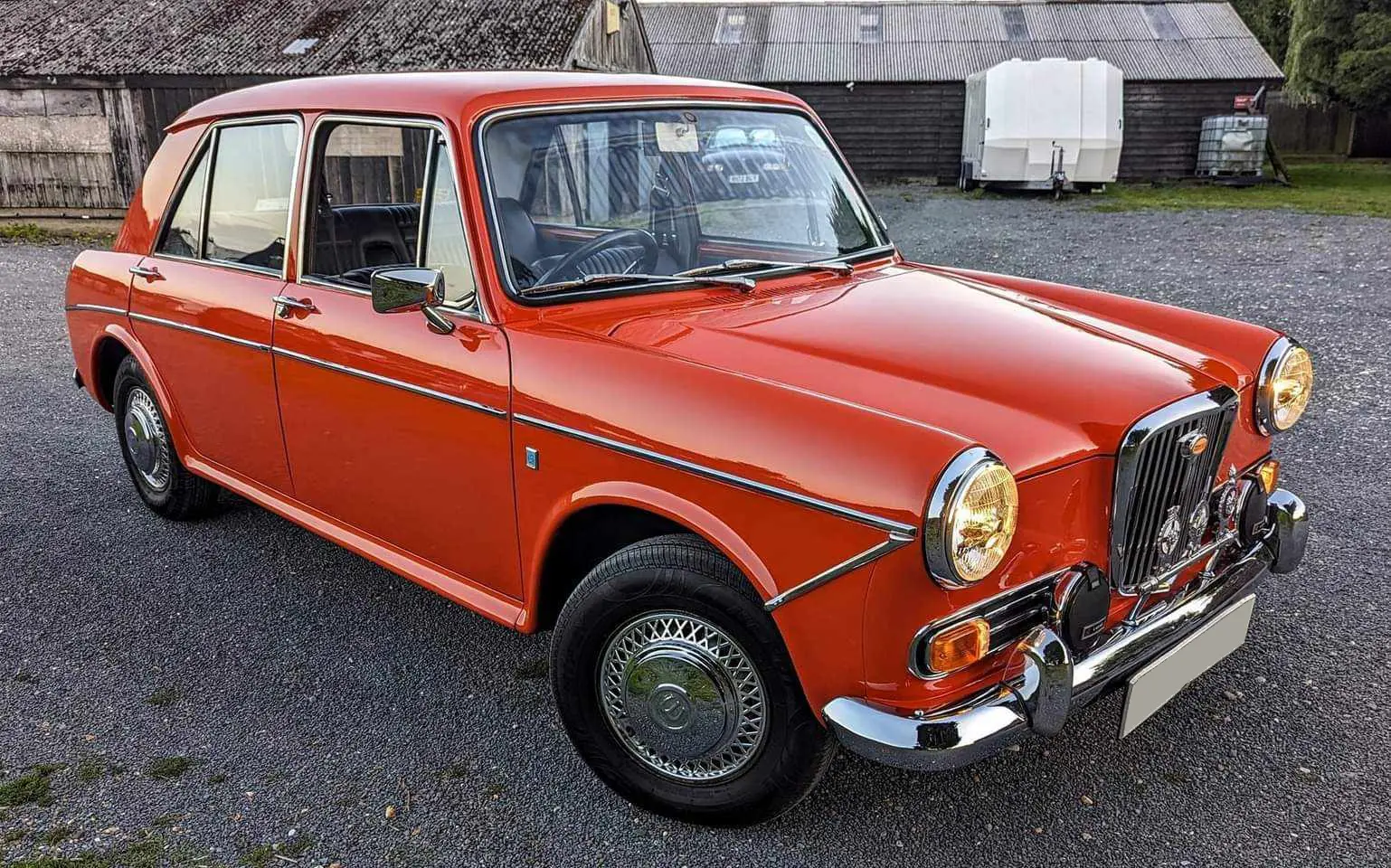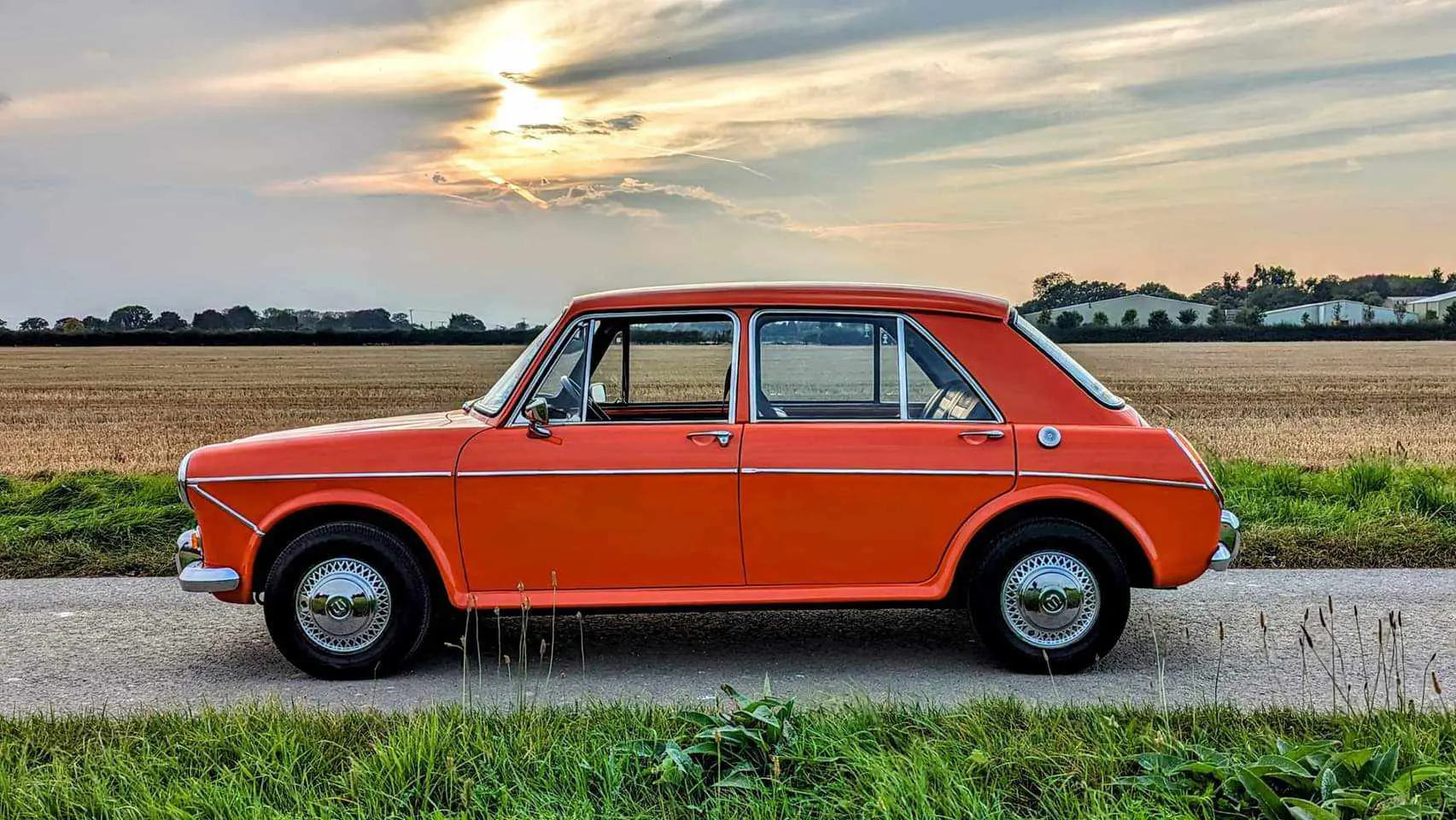MEET THE OWNER – JAMES ROSS SINCLAIR AND HIS WOLSELEY 1300
24 May 2024
These things were so popular in the 1960s and 1970s that nobody took any notice of them. There was at least one on every street. By the late 1970s/early 1980s, they were falling apart and becoming a rarer sight. If familiarity breeds contempt, then 50 years after production finally ended, I think objectively, this is a very pretty car.
We have previously featured James’s magnificent Renault 10, and this latest addition to his fleet was once an even more familiar sight in outer suburbia. In 1972, a Wolseley 1300 Automatic was the sort of car favoured by retired majors, primary school head teachers and the leading ladies of Thames Television sitcoms.

In terms of the ADO16 hierarchy, the Wolseley ranked above the Morris, Austin and MG, but below the Riley and the Vanden Plas. The Morris debuted first on the 15th August 1962, followed by the MG on the 2nd October. 1963 saw the Austin and Vanden Plas versions, while seasoned BMC-watchers predicted Wolseley and Riley-badged ADO16s in the very near future.
And in September 1965 the Wolseley 1100 and the Riley Kestrel replaced the 1500/One Point Five. In essence, the new Wolseley was the MG with the addition of leather trim and a new grille. Plus, for a bargain £767 9s 10d you too could enjoy a car “Ideally suited to modern motoring conditions”.
BMC now sold the ADO16 as six different brands, and, in true corporation fashion, it proceeded to complicate the lineup further. June 1967 saw the launch of the single carburettor 1.3-litre versions as the MG, Riley, VDP and Wolseley 1275. The Mk.2 facelift was three months later, and the entire range now sported cropped fins.

By the end of 1967, the ADO16 family consisted of 29 models, and some rationalisation was essential. In early 1968, shortly after the Leyland/BMC merger, the MG 1100 Mk. 2, the four-door MG 1300, the Wolseley 1100 Mk. 2, the Riley Kestrel 1100 Mk.2, the Vanden Plas 1100 Mk. 2 and the 1.1-litre Austin Countryman/Morris Traveller were all discontinued. By June of that year, the manual gearbox MG, Riley VDP and Wolseley 1300s had twin carburettors; the automatic versions used a single carburettor.
All of this may read like the plot of a minor Hitchcock film, but when James’s ADO16 departed the Cowley factory, it was one of only two Wolseleys still on sale. The Six ‘Landcrab’ was the sole other vehicle to wear the famous grille, as British Leyland’s management did not appreciate the marque’s potential. In 1975 the 2200 ‘Wedge’ was the swansong of one the oldest names in British motoring history.
And this was a great pity as a 1972 Wolseley 1300 had an innate appeal to motorists who regarded its Austin 1300GT as the nadir of vulgarity. For a mere £1,132 in automatic form, the owner could appreciate how “ELEGANCE starts with quality”. These are sentiments that James would no doubt agree with. By comparison, an Escort 1300 XL Automatic with four doors cost £1,052, but many Wolseley owners muttered “parvenu” at the mention of Ford.
Wolseley sales ended in August 1973, and there was to be no equivalent member of the Austin Allegro family. For a car that was once the most popular in the UK (and the star of seemingly every 1970s Public Information Film), the ADO16 is now a rare sight. But James’s Wolseley is a reminder of how important a vehicle was to the British motor industry.
After all, as the sales copy stated, the Wolseley 1300 was “rich in technical and aesthetic refinements.”
With Thanks To - James Ross Sinclair
